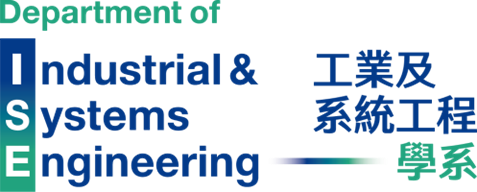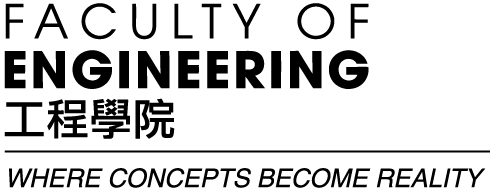In support of the Nation’s first lunar sample return mission, a research team at The Hong Kong Polytechnic University (PolyU) developed and manufactured one of the key systems for this historic undertaking, namely the “Surface Sampling and Packing System”, in collaboration with the China Academy of Space Technology. The PolyU-developed system accomplished the tasks of automatic sample collection and packaging on the lunar surface following the soft landing of the Chang’e 5 probe on 1 December 2020. The vehicle carrying the samples is currently on course back to Earth, and is expected to touch down in China’s Inner Mongolia region next week.
Chang'e-5 is the world’s first lunar-sample return mission in more than 40 years, aiming to bring back a large amount of lunar samples of up to two kilograms via robotic means. The probe adopts two methods of moon surface sampling: one uses a robotic arm for multiple-point surface sample collections, and the other is to drill underground. The team led by Professor YUNG Kai-leung, Sir Sze-yuen Chung Professor in Precision Engineering, Chair Professor of Precision Engineering and Associate Head of Department of Industrial and Systems Engineering, PolyU, was tasked in 2011 to develop the “Surface Sampling and Packing System”, a comprehensive system for lunar surface sampling, packaging and sealing.
Dr LAM Tai-fai, Chairman of Council, PolyU, remarked, “The collection of lunar samples is a landmark occasion in the history of our Nation’s space exploration programme. It is a great testament to our University’s cutting-edge research capability that PolyU was the only tertiary institution in Hong Kong to contribute to the Chang'e 5 mission. Furthermore, the fact that Hong Kong-based scientists at PolyU developed some of the most critical components for the project is a fantastic accomplishment for the whole city, proving that Hong Kong can play an important role in supporting our Nation in making significant strides in the fields of space exploration and science.”
Mr Alfred SIT, Secretary for Innovation and Technology of the HKSAR Government, said, “Over the years, PolyU has actively participated in our Nation's space exploration projects by developing highly sophisticated space instruments for our country. In the Chang'e 5 lunar exploration project, PolyU fully demonstrated its rich experience accumulated in national and international space projects, its cutting-edge technology as well as its innovative thinking. PolyU's efforts in research are in line with and complementary to the Government's goal of developing Hong Kong into an international innovation and technology hub.”
Professor Jin-Guang TENG, PolyU President, said, “The Chang'e 5 lunar mission has been watched closely by the entire world, since it will help the scientific community uncover some of the Moon’s secrets and mysteries. I am immensely proud that PolyU researchers developed the pioneering ‘Surface Sampling and Packing System’ to facilitate the success of this milestone mission. By contributing to such a sophisticated national space project, the University has demonstrated its substantial research competence and commitment to producing breakthrough solutions that push forward the frontiers of technology and science. PolyU will continue to devote itself to the pursuit of research excellence and the creation of innovations that benefit Hong Kong, the Nation and our world.”
Professor Yung expressed the pride he and his team felt to be part of this ground-breaking accomplishment. He said, “Collecting a large amount of lunar samples via robotic means was unprecedented. From research, through design to manufacturing, the development of this system has required a very high level of innovation, precision and reliability. A small glitch anywhere in the complex chain of necessary tasks could have instantly negated all the costly efforts made by those involved in the mission. Thanks to the support of the Nation, the University and the experts at PolyU Industrial Centre, we were able to produce this cutting-edge space-qualified instrument that has successfully acquired samples from the lunar surface. We are indebted to the Nation in entrusting such a critical responsibility to PolyU.”
Consisting of two samplers for collecting loose and sticky forms of lunar regolith, two near-field cameras, as well as a packaging and sealing system, the “Surface Sampling and Packing System” has more than 400 components constructed in different materials including titanium alloy, aluminum alloy and stainless steel, which make the instruments light in weight but at the same time durable and strong enough to withstand the harsh space environment.
Talking about the challenges of the project, Professor Yung said, “As our system needed to operate on the sun-facing side of the Moon where the ground temperatures could be as high as 110 degree Celsius, this innovation had to be highly sophisticated and capable of functioning under extremely high temperatures. It also needed to withstand the extreme space environment during travel to and landing on the Moon which meant enduring impact and shock during lift-offs and landings, high vacuum on the moon, exposure to solar wind and cosmic rays, as well as high-speed re-entry to Earth’s atmosphere.”
“To meet the limited payload requirement, we had to be innovative in our mechanism design and be stringent in weight control. For example, the two samplers are more than a tool to acquire lunar regolith. They are also used to pick up and move the sample container from the lander to the ascender atop,” Professor Yung continued.
Features of the Surface Sampling and Packing System:
Sampler A – Around 35 cm in length, Sampler A, in the shape of a shovel, is specifically engineered for collecting loose regolith. The vibration and impact during the closing of the sampler is an elaborate design to dislodge excessive debris, chisel away large pieces of regolith, tightly enclose the samples and precisely deposit the selected samples into the container without contaminating the surrounding.
Sampler B – Around 30 cm in length, Sampler B is used for collecting sticky samples by coring into the ground with teeth-like metal flaps when opened. It captures the targeted samples through the closing of these metal flaps. The piston inside the sampler pushes the sticky samples into the container during depositing of the sample when the flaps gradually open.
Near-field Cameras – Heat resistant up to 130 degree Celsius, a near-field camera is attached to each sampler. This camera provides a monitoring and vision guidance function to help select scientifically valuable lunar samples. The vision guidance function also enables the sampler to deposit the samples into the container, grip the container and transfer it into the ascender precisely.
Sealing and Packaging System – Weighing 1.5 kilograms, of which the sample container weighs only 360 grams and is used to seal and store the lunar samples for returning to Earth, this system includes deployment of a funnel to protect the sample container from contamination when the lunar regolith is deposited and a sweeping action to brush away excessive sample to ensure the container lid can be closed properly.
Being the only tertiary institution in Hong Kong that possesses international deep space qualification experience, PolyU has been contributing to the Nation’s space projects since 2010. As part of the Nation’s lunar exploration programme, Professor Yung collaborated with the China Academy of Space Technology to develop a “Camera Pointing System” for Chang’e 3 in 2013 and for Chang’e 4’s historic landing on the lunar far side in 2019, and a Mars Camera for Tianwen 1 in 2020. The “Surface Sampling and Packing System” will be used for the Chang’e 6 mission as well.
PolyU has actively participated in other space exploration projects, designing and manufacturing a number of sophisticated space tools in the past decade. These include the “Mars Rock Corer” for the European Space Agency’s 2003 Mars Express Mission and the “Soil Preparation System” for the Sino-Russian Space Mission in 2011.
為支持國家首次月球採樣返回任務,香港理工大學(理大)科研團隊與中國空間技術研究院合作為這項歷史性任務研製了一套關鍵儀器「表取採樣執行裝置」。該裝置已於12月1日隨嫦娥五號成功於月面軟著陸,並完成了全自動的表土採樣及封裝任務。載有月壤樣本的飛行器目前正返回地球,預計下周在中國內蒙古地區降落。
嫦娥五號是人類四十多年來首個在月球表面採集樣本的探測器,這次任務旨在於月球表面進行全自動採樣,將多達兩公斤的月球樣本帶回地球。嫦娥五號探測器以「表取採樣」(即利用機械臂在月面進行多點採樣)和「鑽取採樣」兩種方式取得月壤。針對「表取採樣」的方式,理大工業及系統工程學系鍾士元爵士精密工程教授、精密工程講座教授及副系主任容啓亮教授於2011年開始率領團隊研發一套精密的「表取採樣執行裝置」,用以進行月面採樣及封裝。
理大校董會主席林大輝博士表示:「採集月球樣本是國家太空探索歷史上的一個重要里程碑。而理大是香港唯一有份參與嫦娥五號任務的高等院校,這充分印證了我們擁有頂尖的科研實力。再者,理大科研人員代表著香港成功為月球採樣任務研製關鍵的太空儀器,為香港爭光之餘,亦足證香港有能力在國家太空探索及科研發展上擔當重要角色。」
香港特區政府創新及科技局局長薛永恒先生表示:「多年來,理大積極參與國家的太空探索項目,為國家研製高度精密的太空儀器。在這次嫦娥五號探月工程中,理大充分展示科研團隊過去多年來在國內外航天項目中所累積的豐富經驗、努力研發的高端技術,以及力求創新的思維。理大在科研方面所作出的努力,與特區政府銳意發展香港成為國際創新科技中心的目標,相輔相成。」
理大校長滕錦光教授說:「嫦娥五號的採樣返回任務有助科學界發現更多月球的奧秘,因此備受世界注目。理大科研人員研製的『表取採樣執行裝置』協助嫦五任務取得成功,我為此感到非常榮幸。藉著參與這項複雜艱巨的太空任務,理大科研團隊展示了其堅實的科研能力及銳意創新的精神,推動前沿技術及科學領域的發展。理大將繼續在科研領域追求卓越、引領創新,積極為香港、國家以至世界作出貢獻。」
對於獲邀參與這次具開創性意義的太空任務,容教授及其團隊深感榮幸。他說:「透過全自動機械臂採集如此大量的月球樣本是史無前例的。這個項目由前期研發、裝置設計到儀器製造,均需要我們的團隊在創新性、精確度和可靠性等方面達到極高水平。由於這次任務十分複雜,環環相扣,任何細節只要出現微細錯誤,便會令之前所付出的努力全部白費。我們衷心感謝國家、大學,以及理大工業中心專家團隊的支持,讓我們成功研製出這套通過太空驗證的儀器,並順利完成採集表土樣本。我們十分感激國家授予這項關鍵的裝置研發任務。」
理大製造的「表取採樣執行裝置」正樣部分包含兩個採樣器,分別用作採集鬆散及黏性樣本;兩個近攝相機;並配備一套「初級裝封系統」用於以密封並保存樣本於樣本容器中。整套「表取採樣執行裝置」由超過400件工件組合而成,由不同材料如鈦合金、鋁合金及不鏽鋼等所製造,減低整個裝置的重量,同時堅硬耐磨,以抵受嚴峻的太空環境。
談及研發過程所遇到的挑戰,容教授說:「由於『表取採樣執行裝置』在面向太陽的一方運作,月面溫度可高達攝氏110度。我們設計這套創新的系統時必須考慮周詳,以便能夠在極高溫下運作,並須抵受太空穿梭期間及月面的極端環境︰包括升空及著陸時的衝擊及震盪、月球的真空環境、太陽風及宇宙射線,並確保在高速穿越地球大氣層時,樣本仍然保持穩定。」
「為達到載荷重量的要求,我們必須在機械設計方面力求創新,嚴格控制整個裝置的重量。以兩個採樣器為例,它們不僅可用於採集樣本,同時具有將樣品容器鉗起的功能,將其從著陸器移到上升器上。」容教授續說。
「表取採樣執行裝置」特點:
- 採樣器(甲) – 採樣器(甲)的長度約為35厘米,其鏟子形狀專為採集鬆散的月球樣本而設。當採樣器閉合時會產生震動及衝擊,這個精心設計能甩走多餘的碎片、鑿開大塊的月壤,並將月壤樣本裹於採樣器內,同時有助將樣本準確地倒入樣本罐中,以免弄污周遭儀器。
- 採樣器(乙) – 採樣器(乙)的長度約為30厘米,用於採集黏性月球表層樣本。採樣器會鑽進月壤,透過打開齒狀金屬瓣抓取黏性樣本,當金屬瓣閉合時即可抓緊目標樣本。隨著金屬瓣慢慢張開,採樣器內的活塞會將黏性樣本推進樣本罐內。
- 近攝相機 – 可抵受高達攝氏130度的高溫。每個採樣器均配有一台近攝相機,可在樣本採集過程中發揮監察和視像導航功能,有助揀選具科研價值的月壤樣本,將樣本準確地倒進樣本罐內及準確地提罐放到上升器內。
- 初級封裝系統 –整個系統重約1.5公斤,而樣本罐只佔360克,用於將月球樣本密封保存,以帶回地球。此系統有多項匠心設計,包括透過漏斗將樣本倒入樣本罐內,期間不會弄污罐身;另外,鎖罐前會掃走溢出罐口的月壤,確保罐蓋能妥善關好,以將罐內的樣本密封鎖緊。
理大是香港唯一擁有國際太空任務實戰經驗的高等院校,自2010年起在國家的太空探究項目方面一直不遺餘力。為支持國家的探月工程,容教授多年來與中國空間技術研究院的專家攜手研製出多項太空儀器,包括應用於2013年嫦娥三號及2019年嫦娥四號的月背探測任務的「相機指向機構系統」,以及2020年應用於天問一號的「落火狀態監視相機」。理大團隊的「表取採樣執行裝置」亦將應用於嫦娥六號探月任務。
理大多年來積極參與不同的太空探索項目,研製各項先進的太空儀器,包括為歐洲太空總署2003年火星快車任務研發「岩芯取樣器」,以及為2011年的中俄聯合探索火星任務研發「行星表土準備系統」。
[From PolyU Media Release]
Media Coverage
- Ming Pao Daily News - https://bit.ly/2JLwdvW
- NowTV - https://bit.ly/33S2xnR
- TVB - https://bit.ly/2K5NhfM
- Sing Tao Daily - https://bit.ly/2Lkt72s
- Oriental Daily News - https://bit.ly/3qIhYsC
- Hong Kong Economic Times - https://bit.ly/3qC6mal
- Wen Wei Po - https://bit.ly/3m6s96N
- Ta Kung Pao - https://bit.ly/2VRlxyg
- Hong Kong Commercial Daily - https://bit.ly/3qDAkuM
- Yahoo - https://bit.ly/2Le0WC9
- Sina - https://bit.ly/39TFhtl
| Topics | Research | Staff Achievement |
|---|---|
| Department of Industrial and Systems Engineering |
You may also like















